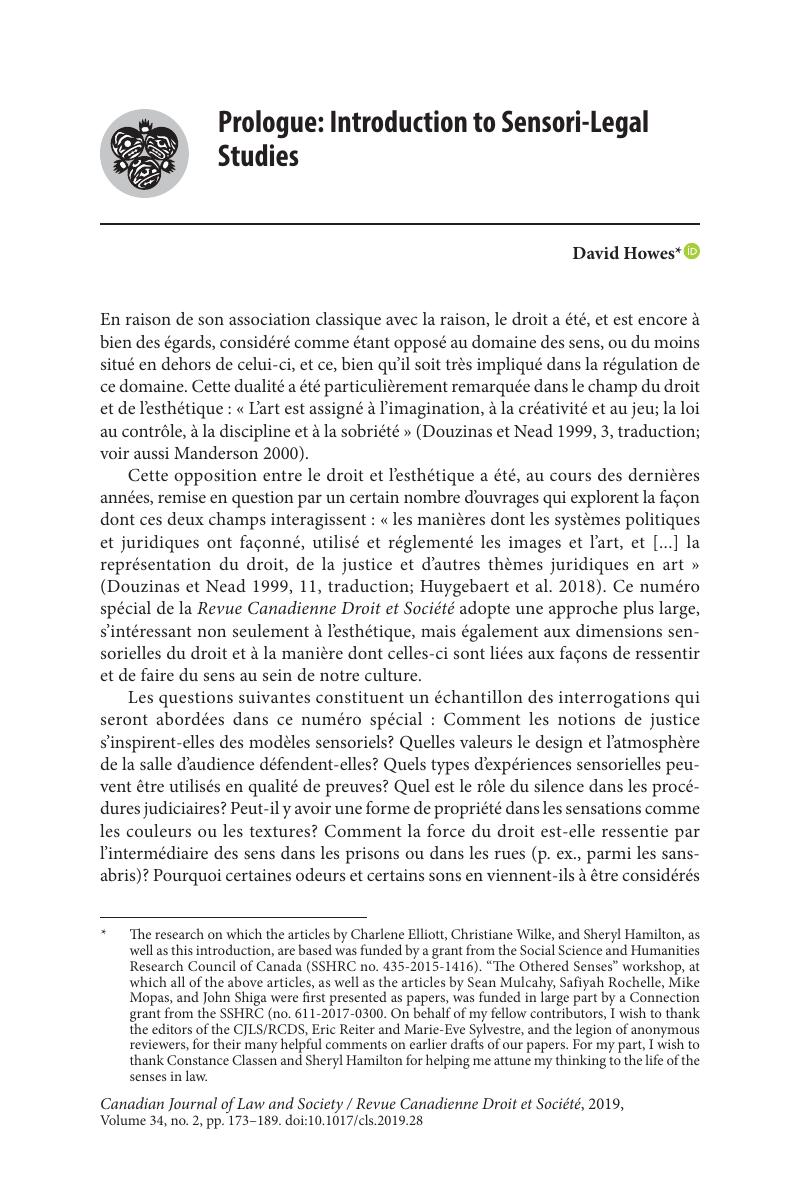Published online by Cambridge University Press: 10 October 2019

The research on which the articles by Charlene Elliott, Christiane Wilke, and Sheryl Hamilton, as well as this introduction, are based was funded by a grant from the Social Science and Humanities Research Council of Canada (SSHRC no. 435-2015-1416). “The Othered Senses” workshop, at which all of the above articles, as well as the articles by Sean Mulcahy, Safiyah Rochelle, Mike Mopas, and John Shiga were first presented as papers, was funded in large part by a Connection grant from the SSHRC (no. 611-2017-0300. On behalf of my fellow contributors, I wish to thank the editors of the CJLS/RCDS, Eric Reiter and Marie-Eve Sylvestre, and the legion of anonymous reviewers, for their many helpful comments on earlier drafts of our papers. For my part, I wish to thank Constance Classen and Sheryl Hamilton for helping me attune my thinking to the life of the senses in law.